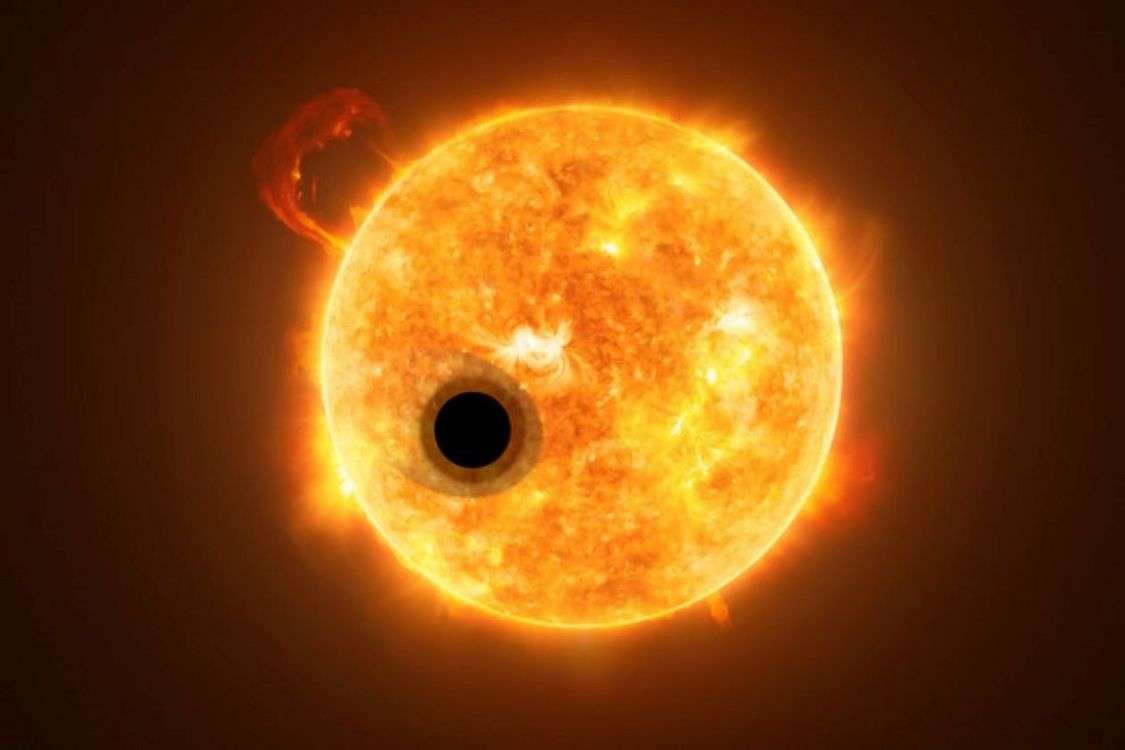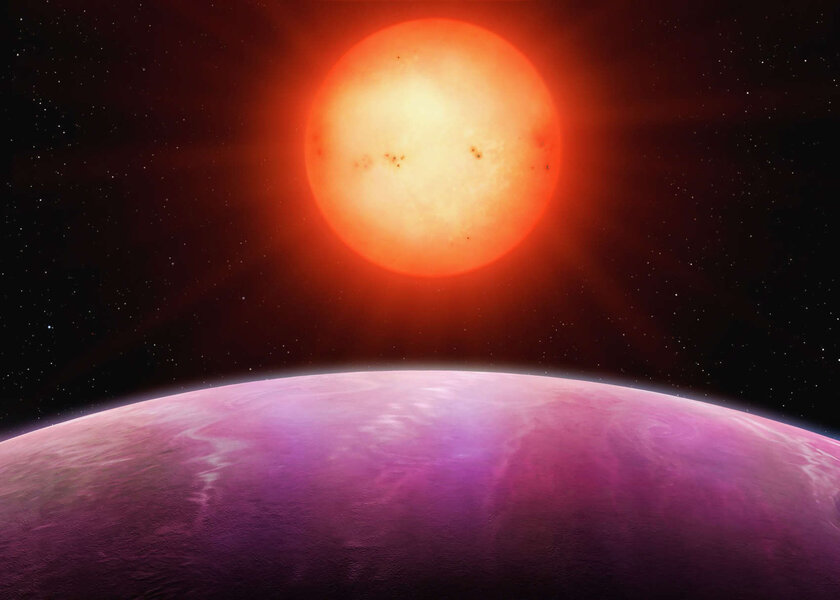Create a free profile to get unlimited access to exclusive videos, sweepstakes, and more!
Marshmallow world: WASP-107b is a superpuff planet with a weirdly tiny core

With over 4,300 confirmed exoplanets found — alien worlds orbiting alien stars — there are bound to be a few oddballs.
And then there’s WASP-107b. It’s a “puffball planet,” one with a large size but low mass, making it extremely low density. And new research shows it’s even weirder than that: The core of the planet is likely far smaller than astronomers previously thought a gas giant core could be, making it hard to understand how it even formed in the first place.
WASP-107b was discovered in 2017, and quickly found to be weird. It’s a hot Jupiter, a gas giant orbiting its star very closely, at a distance of only 9 million kilometers. Mercury orbits the Sun at roughly 60 million kilometers, so WASP-107b is close. The host star, WASP-107, is an orange dwarf, smaller and cooler than the Sun, but still not something you want to be that close to unless baking your entire planet is your goal. The temperature of WASP-107b is likely around 1,000° C (1,800°F).
Hot Jupiters are common enough, but it’s the planet’s mass that’s so weird. As it orbits the star, the star gets tugged by the planet’s gravity, allowing the planet’s mass to be found. The new research finds that it’s only about 30 times more massive than Earth, which sounds like a lot, but Jupiter is 300 times the Earth’s mass. So WASP-107b is the size of Jupiter but only one-tenth its mass.
That gives it about the same density as a marshmallow. That’s pretty fluffy.
That also means it’s not really a hot Jupiter. It’s a hot Neptune.
So how does something with less than twice Neptune’s mass inflate up to the size of Jupiter, almost three times wider than Neptune?
One clue is in how it may have formed. Physical models of planetary formation have a very difficult time making a giant planet that close to its star at all, let alone one with such low density. So it likely formed farther out from its star and moved inward over time.
The most common way for that to happen is through disk migration. Planets form from a flat disk of gas and dust surrounding the host star. As a massive planet forms, its gravity starts to act on the disk, which in turn torques the planet, reducing its orbital energy. The planet drops in toward the star, and that inward migration only stops when it reaches the inner edge of the disk. The disk eventually dissipates, and you’re left with a big planet orbiting close to the star.
That may be what happened with WASP-107b. The new research also finds evidence for a second massive planet on an elliptical orbit farther out from the star WASP-107, which could have gravitationally affected 107b, dropping it toward the star as well.
But that doesn’t explain why WASP-107b is such a lightweight. Normally, in general, we think that a gas giant forms a rocky core first, which, when it gets massive enough, can start to actively draw in the gas around it. When it gets to be somewhat more massive than Neptune, this process accelerates and becomes what’s called runaway accretion: The gas falls in very rapidly and the planet grows wildly. The process stops when there’s no more gas to pull in around the planet. WASP-107b must have been right around that step in the process when it moved inward to the star and its food supply was cut off, keeping it closer in mass to Neptune than Jupiter.
So the astronomers ran a bunch of computer models to see how the planet might have formed, varying various parameters to see what explained its characteristics best, and what they found is bizarre: The core of the planet is most likely less than 4.6 times Earth’s mass, much lower mass than was thought possible for a planet close to Neptune’s mass. This means the planet is something like 85% atmosphere, which is a very high fraction of gas to core. For comparison, Neptune’s atmosphere to core ratio is more like 5 – 15%.
That’s pretty hard to do. They have some ideas for how it might have happened (for example, if it formed where there wasn’t much dust, gas accretion would be rapid, allowing it to grow quickly even with a smaller core) but no matter what, this is an odd planet.
I’ll note that cores of gas giants can be weird. Jupiter, for example, has a fuzzy core; as if there’s kind of a core there but it’s mixed up with all the stuff around it (possibly due to a giant impact early on in its formation). Maybe something happened to WASP-107b’s core to diminish it.
Clearly there’s a lot more to figure out about this planetary marshmallow. As usual, more observations would help, and the team has hopes to continue looking at WASP-107b, especially with newer telescopes coming online (like James Webb). Anything learned will be useful in understanding how planets form in general, too, since we don’t have any planets like this in our own solar system. We learn the most when we find exceptions, and this bizarre world is certainly exceptional.




























